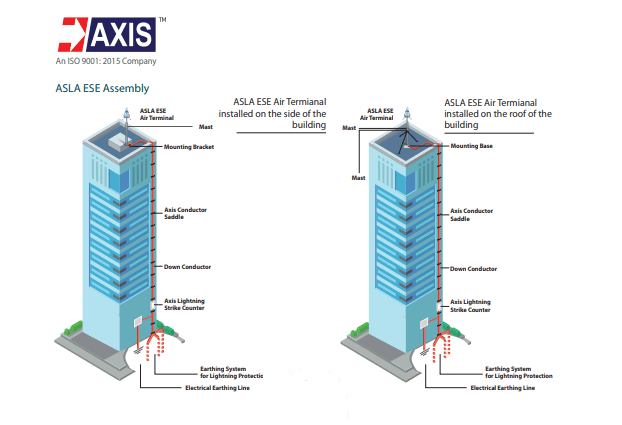Watch our video to understand the working of a conductor in detail!
Conclusion
The sole purpose of a lightning conductor is to offer a low resistance path to the lightning and allow it to pass through the ground without impacting the physical structure. Protection from lightning is essential to safeguard humans, transmission lines and electrical equipment by controlling different types of risks from thermal, mechanical and electrical hazards of the lightning flash current. Lightning always finds a way to flow through the best conductor and flow through it where the medium might be a tree or a building. When the fully charged cloud passes over the lightning conductor, the electric charge will flow down until the cloud is fully discharged. Therefore, there will not be any flash or sound of thunder during this process.
Installing a properly designed lightning protection system significantly reduces the chances of fire, equipment failure, and electrical surges. Modern conductors made of copper or aluminium ensure high conductivity and durability over time. Whether for residential, commercial, or industrial use, routine inspections and adherence to IEC 62305 standards are critical. With increasing rooftop solar and IoT-based infrastructure, the need for robust lightning protection is greater than ever. Want to protect your structure with confidence? Talk to our experts today and get a tailored lightning protection plan.
At AXIS, we design and supply a complete range of lightning protection systems—including air terminals, down conductors, and earthing solutions—engineered to meet IEC 62305 and IS/IEC 62561 standards. Our solutions are built with precision using high-conductivity copper and aluminium components, ensuring reliable performance and long-term protection against lightning hazards. Whether for commercial complexes, data centers, or solar installations, AXIS provides end-to-end support—from system design and risk assessment to product selection and installation guidance—helping you safeguard your infrastructure with complete peace of mind.
Thank you for reading the blog, Axis is a leading manufacturer and supplier of Electrical Components to over 80+ Countries. To get a quote or to talk to our industry expert visit our contact us section. You can also watch our videos by our experts – click here.
Follow us on LinkedIn for regular updates on our Products!


